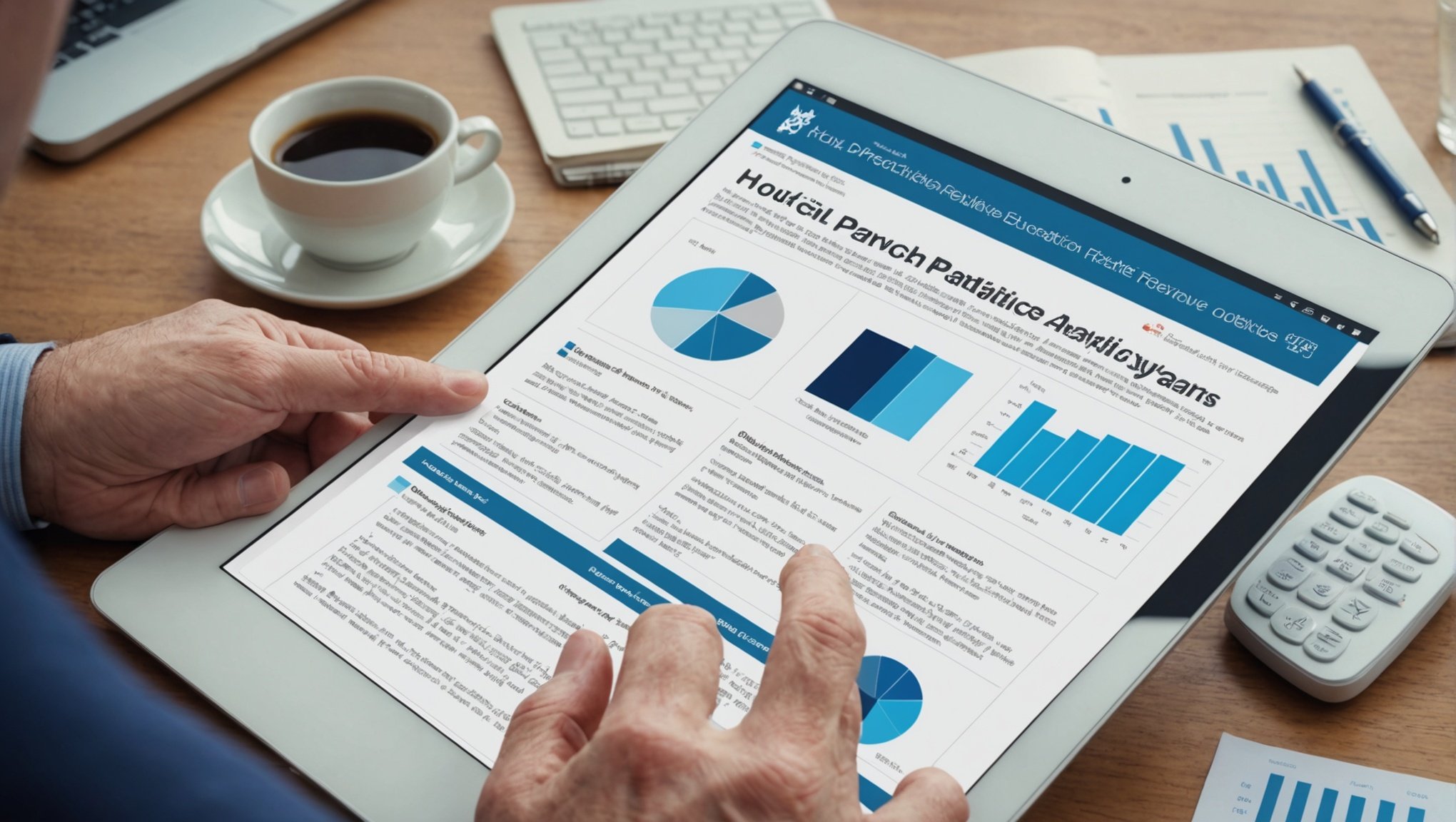In the ever-evolving landscape of healthcare, predictive analytics stands out as a transformative force capable of revolutionizing patient outcomes. As we navigate through the advancements of 2024, the question arises: how can predictive analytics enhance patient care in the UK? This article delves into the mechanics of predictive analytics, its practical applications in primary care, and the remarkable benefits it brings to both healthcare providers and patients. Read on to uncover the potential this technology holds for the future of primary care in the UK.
The Mechanics of Predictive Analytics
Predictive analytics is a sophisticated tool that leverages historical data, statistical algorithms, and machine learning techniques to forecast future events. In the realm of healthcare, this translates to anticipating patient needs, identifying potential health risks, and optimizing treatment plans. By analyzing vast amounts of data from electronic health records (EHRs), wearable devices, and other sources, predictive analytics offers a proactive approach to patient care.
Also to discover : What Are the Future Prospects of AI in UK Weather Forecasting?
The foundation of predictive analytics lies in its ability to process and interpret complex data sets. For healthcare providers, this means transforming raw data into actionable insights. These insights can predict disease outbreaks, identify at-risk patients, and improve diagnostic accuracy. In UK primary care, this is particularly crucial given the diverse and aging population.
Predictive analytics isn’t just about crunching numbers; it involves intricate models that learn from patterns. These models can detect subtle changes in a patient’s health that might be overlooked during routine check-ups. For instance, by analyzing a patient’s historical data, predictive analytics can identify early signs of chronic illnesses, enabling timely intervention.
This might interest you : How Can Augmented Reality Enhance Employee Training in UK Manufacturing?
Moreover, the integration of artificial intelligence (AI) and machine learning further enhances the capabilities of predictive analytics. AI algorithms can continuously learn and adapt, improving their predictive accuracy over time. This dynamic nature of predictive analytics ensures that healthcare providers stay ahead of potential health issues, ultimately leading to better patient outcomes.
Practical Applications in Primary Care
Incorporating predictive analytics into primary care involves a multifaceted approach that spans various aspects of patient management and disease prevention. From personalized treatment plans to efficient resource allocation, the applications are vast and impactful.
One significant application is risk stratification. By analyzing patient data, predictive models can categorize individuals based on their risk levels for specific conditions. For instance, patients with a family history of cardiovascular diseases can be identified early and monitored more closely. This targeted approach ensures that high-risk patients receive the necessary care and interventions before conditions become severe.
Another crucial application is in the realm of preventive care. Predictive analytics can identify trends and patterns that indicate potential health issues. For example, by monitoring lifestyle factors such as diet, exercise, and smoking habits, healthcare providers can predict the likelihood of developing conditions like diabetes or hypertension. With this information, tailored preventive measures can be implemented, reducing the incidence of chronic diseases.
In addition, predictive analytics plays a vital role in resource management. Primary care facilities often face challenges related to staffing, appointment scheduling, and inventory management. Predictive models can forecast patient influx, allowing for optimal allocation of resources. This not only improves operational efficiency but also enhances patient satisfaction by reducing waiting times and ensuring timely care.
Furthermore, predictive analytics can streamline medication management. By analyzing patient data, healthcare providers can predict potential adverse drug reactions and interactions. This ensures that patients receive the most effective and safe medications, minimizing the risk of complications. In UK primary care, where polypharmacy is common among the elderly population, this application is particularly beneficial.
Benefits for Healthcare Providers and Patients
The integration of predictive analytics into primary care brings a multitude of benefits for both healthcare providers and patients. These advantages not only enhance the quality of care but also contribute to the overall efficiency and sustainability of the healthcare system.
For healthcare providers, one of the primary benefits is improved diagnostic accuracy. Predictive models can analyze vast amounts of data and identify patterns that may not be apparent to human clinicians. This leads to more accurate diagnoses and timely interventions. In turn, this reduces the likelihood of misdiagnoses and ensures that patients receive the appropriate treatment.
Another significant benefit is enhanced patient monitoring. Predictive analytics enables continuous monitoring of patient health through wearable devices and remote sensors. This real-time data allows healthcare providers to detect early signs of deterioration and intervene promptly. For patients with chronic conditions, this continuous monitoring can prevent hospitalizations and improve their overall quality of life.
Predictive analytics also facilitates personalized care. By analyzing individual patient data, healthcare providers can develop tailored treatment plans that address specific needs and preferences. This personalized approach not only improves patient outcomes but also enhances patient engagement and satisfaction. When patients feel that their care is customized, they are more likely to adhere to treatment plans and follow medical advice.
For patients, one of the most significant benefits is proactive healthcare. Rather than waiting for symptoms to manifest, predictive analytics allows for early detection and intervention. This proactive approach can prevent the progression of diseases and improve long-term health outcomes. Additionally, patients can receive targeted preventive care, reducing the risk of developing chronic conditions.
Moreover, predictive analytics contributes to cost savings. By preventing hospitalizations, reducing the need for unnecessary tests, and optimizing resource allocation, healthcare costs can be significantly reduced. This benefit extends to both healthcare providers and patients, making healthcare more affordable and accessible.
Overcoming Challenges and Moving Forward
While the benefits of predictive analytics are evident, there are several challenges that need to be addressed to fully realize its potential in UK primary care. These challenges range from data privacy concerns to the integration of technology into existing healthcare systems.
One of the most pressing challenges is data privacy. With the increasing use of digital health records and wearable devices, there is a growing concern about the security of patient data. Ensuring that patient information is protected and used ethically is paramount. Healthcare providers must adhere to stringent data protection regulations and implement robust cybersecurity measures to safeguard patient data.
Another challenge is the integration of predictive analytics into existing healthcare systems. Many primary care facilities still rely on traditional methods of patient management. Integrating predictive analytics requires significant investment in technology and training. Healthcare providers must be willing to adopt new tools and processes to harness the full potential of predictive analytics.
Additionally, there is a need for standardization. To ensure that predictive models are accurate and reliable, there must be standard protocols for data collection and analysis. Establishing industry-wide standards will facilitate the seamless integration of predictive analytics into primary care and ensure consistent and high-quality care for patients.
Education and training also play a crucial role in overcoming challenges. Healthcare providers must be equipped with the knowledge and skills to effectively use predictive analytics tools. Continuous education and training programs can help clinicians stay updated with the latest advancements and best practices in predictive analytics.
In conclusion, predictive analytics has the potential to significantly improve patient outcomes in UK primary care. By leveraging historical data, advanced algorithms, and machine learning techniques, healthcare providers can adopt a proactive approach to patient care. From risk stratification and preventive care to resource management and personalized treatment plans, the applications of predictive analytics are vast and impactful.
The benefits of predictive analytics extend to both healthcare providers and patients, enhancing diagnostic accuracy, patient monitoring, and personalized care. While there are challenges that need to be addressed, the future of predictive analytics in primary care looks promising. By overcoming these challenges and embracing this transformative technology, we can pave the way for a brighter and healthier future for primary care in the UK.
As we continue to advance in the field of healthcare, predictive analytics will undoubtedly play a crucial role in shaping the future of patient care. By staying ahead of potential health issues and providing tailored interventions, predictive analytics holds the key to improving patient outcomes and transforming the healthcare landscape in the UK.











